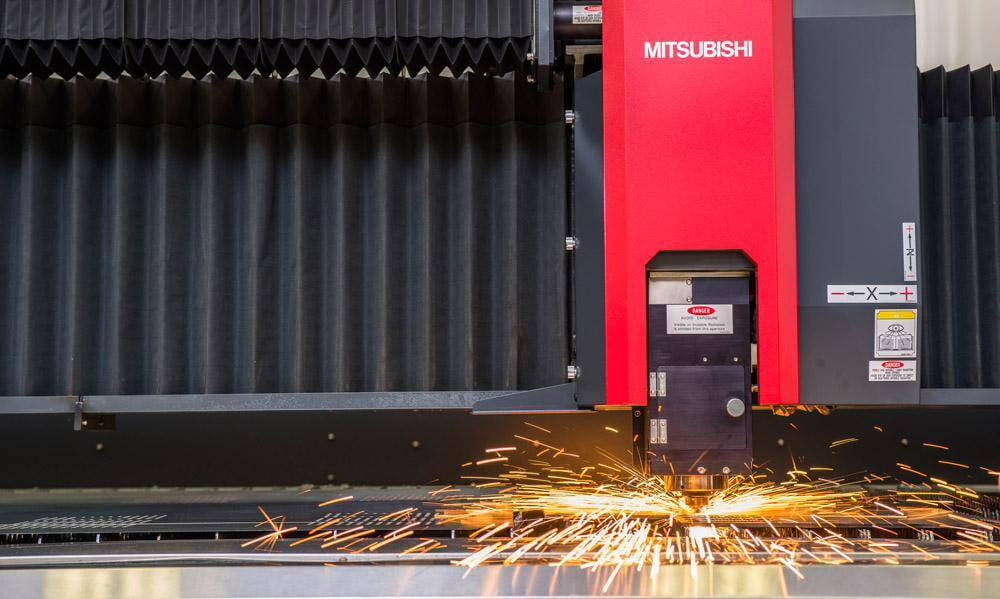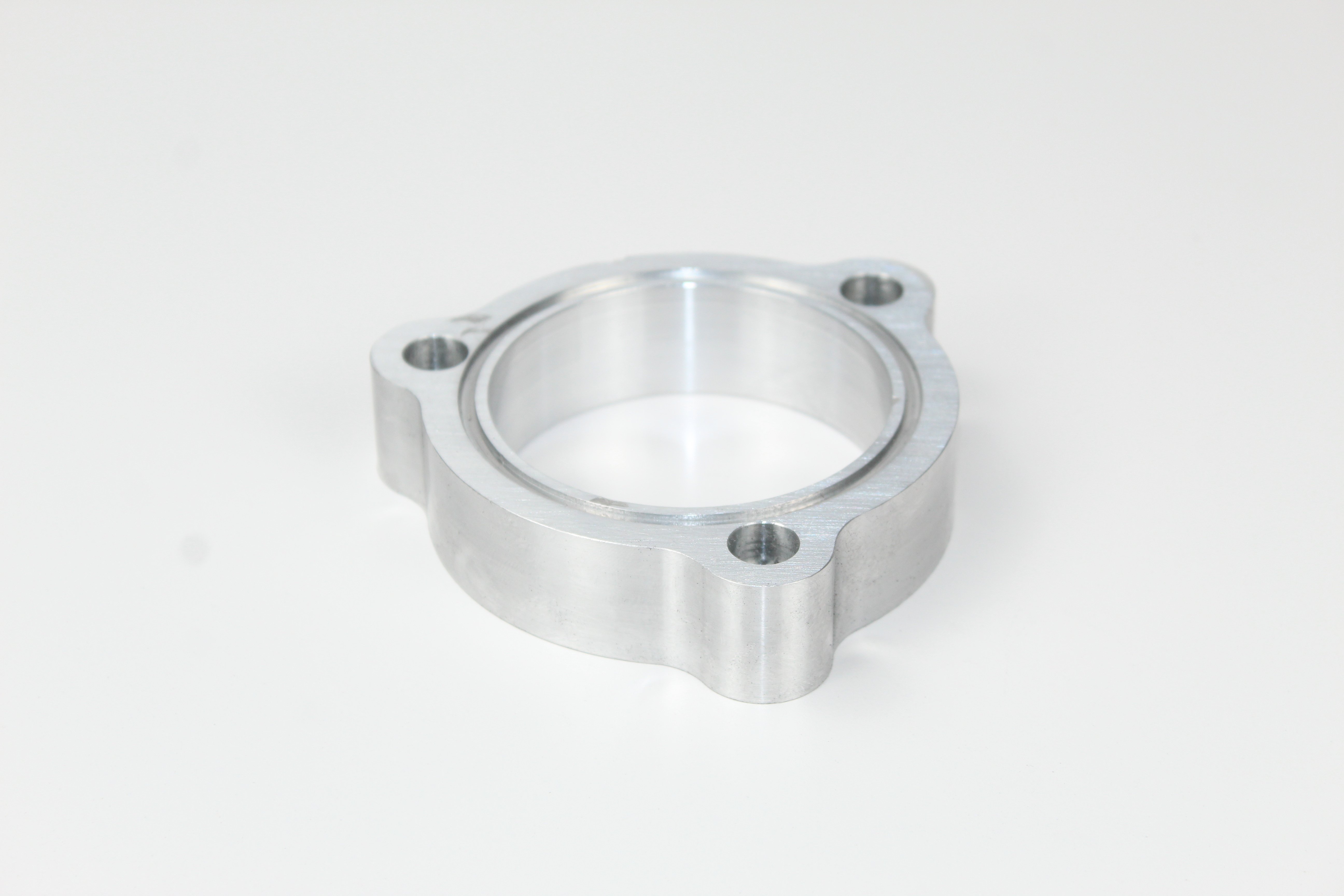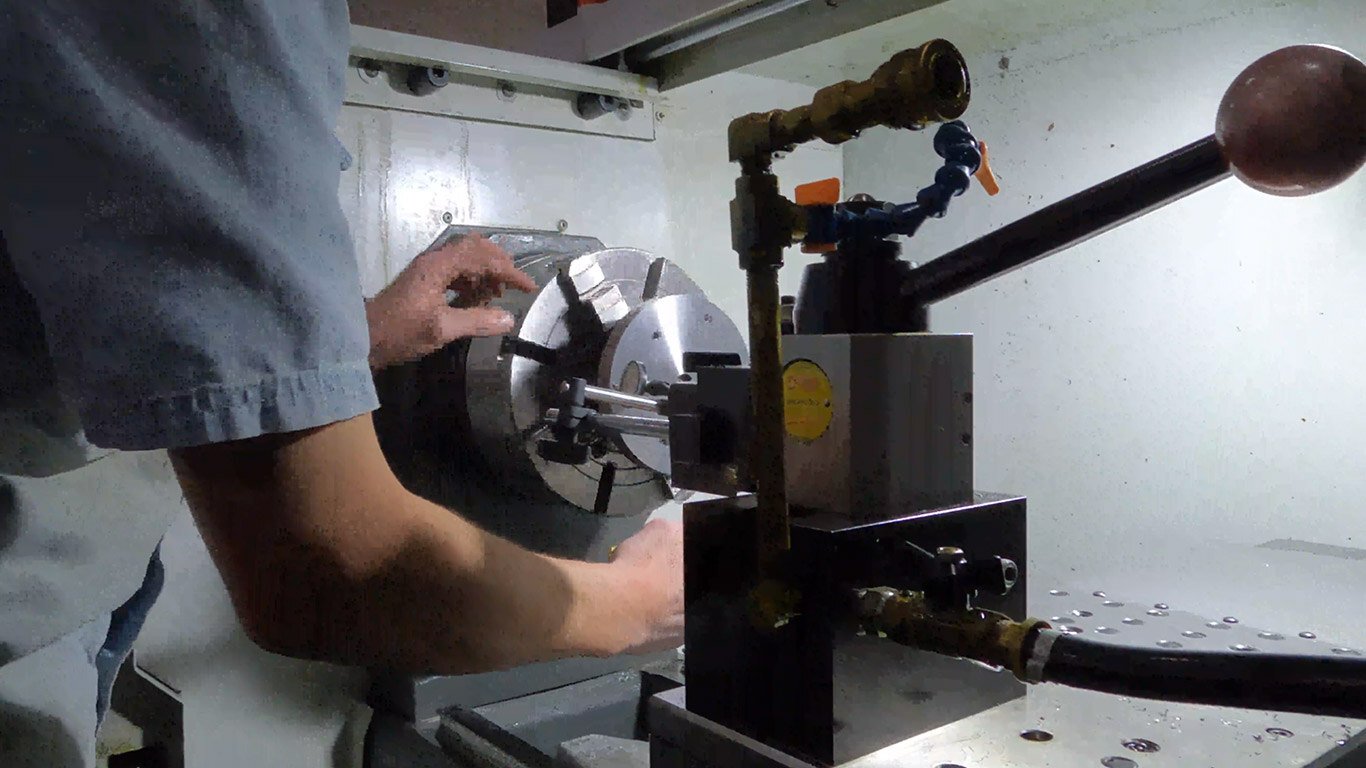Capabilities
2D Laser Cutting
2D laser cutting uses a focused, high-precision beam to cut metal, delivering exact shapes and designs for your project.
Request a QuoteLorem ipsum dolor sit amet, consectetur adipiscing elit, sed do eiusmod tempor incididtat non proident.
Made in the USA since 1981.
Achieve unmatched precision and performance with 2d laser cutting.
Using a precise, highly concentrated beam of light, this method cuts metal with incredible power density, delivering meticulously crafted parts and detailed designs that meet your exact specifications.
Why 2D Laser Cutting Works for Your Project
2D laser cutting is a versatile, efficient solution that addresses common manufacturing challenges. Here's how our services can benefit your project:
Material Compatibility
We offer laser cutting services for a wide range of metals, including hot/cold-rolled steel, aluminum, stainless steel, coated steel, copper, brass, and more.
Maximum Cutting Thickness
Our advanced 2D laser cutter can handle up to 1" thick mild steel, aluminum, and stainless steel, giving you the versatility needed for complex designs.
Sheet Size Capabilities
With a large bed size, we accommodate sheet sizes up to 81" x 157", making it easy to cut expansize or oversized parts with precision.
Specialty Features
Our laser cutting system also provides intricate etching options on metals - including aluminum and copper - allowing for detailed markings, logos.
Ready to learn more? Connect with us and let’s discuss your needs.

Our Capabilities Geared For You
At KRYTON, we're committed to precision and efficiency, offering a range of laser cutting services tailored to meet your project needs. Whether you're seeking accuracy, quick turnaround times, or specialized metals, our team has the expertise and technology to deliver.
Consistent Quality with AI-Enabled Precision
AI-optimized cutting performance adapts to material properties for high-quality, consistent results without the need for constant manual adjustments.
Versatility for Complex Projects
Conquer intricate custom designs, diverse orders, and large production runs with technology that reduces errors and delays.
Cost and Environmental Efficiency
High-powered lasers combined with gas reduction techniques allow for cutting thicker materials using less energy.
Real-Time Adjustments for Optimal Results
By optimizing cutting paths and reducing material waste, you benefit from cost-effective solutions that keep your project on track and within budget.
Gasses used in laser cutting
Different gasses play a crucial role in determining the speed, edge quality, and finish of your laser-cut parts. Here are three of the most common gasses:
Nitrogen cutting
Nitrogen is used primarly to create oxide-free edges. This method prevents oxidation which can cause paint to adhere poorly to the metal's surface and cause paint chips.
oxygen cutting
Oxygen aids in the cutting process by increasing heat, making it a more efficient option for cutting thicker materials.
Blended Air Cutting
Blended air is an economical option that combines both oxygen and nitrogen. It's commonly used for general-purpose cutting, offering a balance between cutting speed and edge quality.
Lorem Ipsum
Lorem Ipsum












Ready to learn more? Connect with us and let’s discuss your needs.
Laser Cutting FAQs
What is laser cutting?
Laser cutting is a manufacturing process that uses a highly focused beam of light to cut, melt, or vaporize materials. Controlled by advanced software, this intense beam allows for high precision and efficiency, making it ideal for creating intricate designs and complex geometries.
What materials can be laser cut?
Laser cutting is suitable for a wide range of metals:
- Ferrous metals such as carbon steel and stainless steel
- Non-ferrous metals such as aluminum, copper, and brass
- Coated steels such as aluminized steel and galvanized steel
How does laser cutting compare to other processes?
Laser cutting is more precise, especially for intricate shapes, compared to plasma cutting. Unlike mechanical cutting methods, laser cutting is a non-contact process, which minimizes material distortion and damage. Also, laser cutting is faster and more efficient, ideal for high-volume production.
What are your size and thickness limits?
Parts can range in size from very small components to large sheets, with precise control over dimensions and tolerances. Specifically, our maximum 2D laser-cutting area is 81"x157".
For our material thickness capabilities, we can cut up to:
- 1" thick mild steel
- 1" thick stainless steel
- 1" thick aluminum
- 0.135" thick galvanized steel
- 0.190" thick brass
- 0.375" copper
Can laser cutting be combined with other processes?
Yes, laser cutting can be integrated with other manufacturing processes for comprehensive solutions. It can be combined with hydroforming for shaping metals, machining for additional detailing, and welding for assembling multi-part components.
What industries use laser cutting?
Key sectors that utilize laser cutting include:
- Aerospace: Used for components like brackets and panels
- Automotive: Essential for parts like body panels and exhaust systems
- Food Processing: Employed for equipment like stainless steel conveyor belts
- Energy: Critical for components in oil and gas, nuclear, and renewable energy systems
- Medical: Used for surgical instruments and medical device components
What are the lead times for laser-cutting projects?
Lead times for laser-cutting projects vary based on the complexity and volume of the order. Simple projects can be completed in a few days, while more complex or large-scale orders may take several weeks. Factors influencing lead times include the material type, design complexity, order size, and current production schedule.
Do you offer prototyping services?
Yes, we offer prototyping services to help refine your designs before committing to full-scale production. Prototyping allows you to test and adjust your designs, ensuring that the final product meets all specifications and performance criteria.
How do I start a project or get a quote?
Contact our team through our website or by phone. Provide details about your project, including material specifications, dimensions, and quantity.
Reach Out
